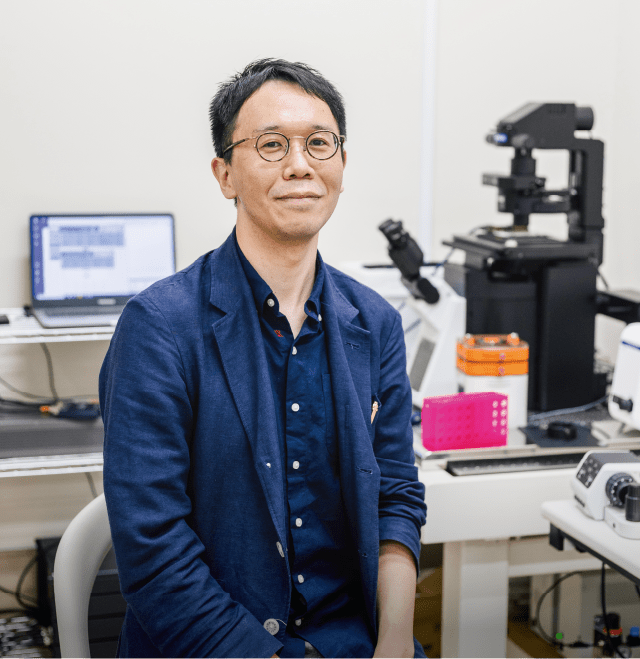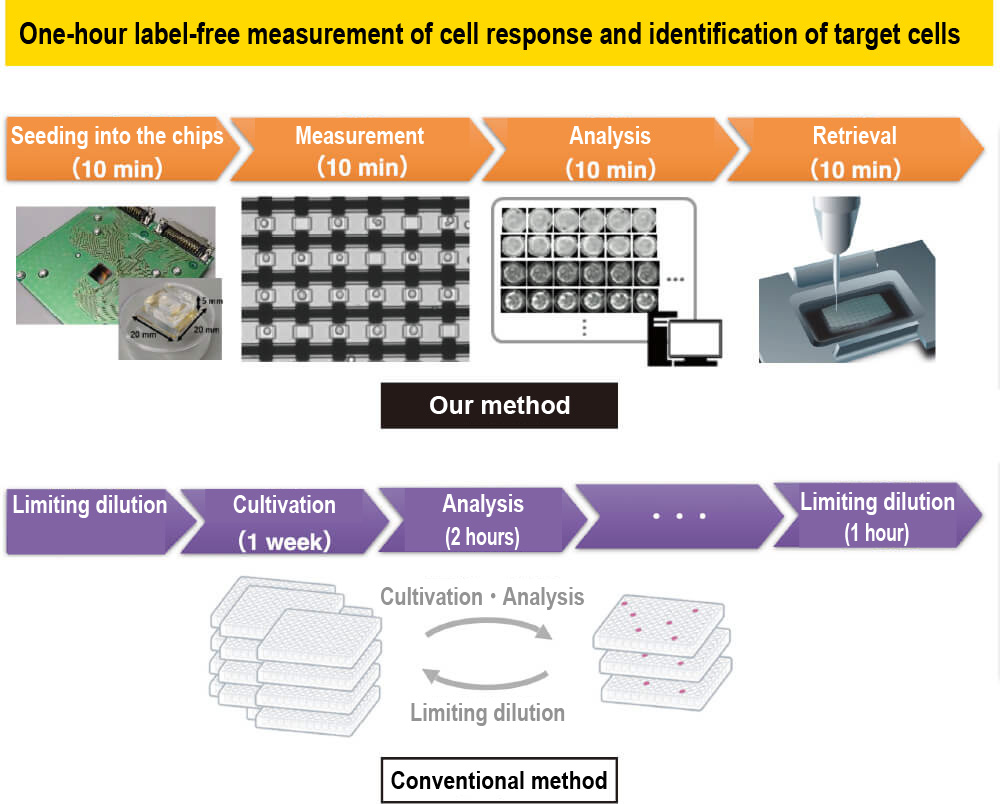Label-Free Assessment of Single-Cell Electrical
Properties Using Microelectrode Chip for Cell Rotation
Label-Free Assessment of Single-Cell Electrical
Properties Using Microelectrode Chip for Cell Rotation
Rotate cells using a unique microelectrode device equipped with microwell array.
The electrical properties of the cells are easily and rapidly assessed from their rotation rate.
We will contribute to the field of cell therapy by developing a device that can identify and retrieve single cells in a label-free manner.
- Affiliation:
- Analytical Chemistry Laboratories
Department of Material Science,
Graduate School of Science
University of Hyogo
- Representative:
- Masato Suzuki

Associate Professor,
Graduate School of Science
University of Hyogo
Masato Suzuki PhD
After joining the Technology Division of Panasonic Corporation, he participated in CREST and Kyoto University COI as a company researcher. After conducting research and development of biosensors including urine analysis sensors, cell-based odor sensors, and drug evaluation sensors using iPS cell-derived cardiomyocytes, he assumed his current position.
SOLUTIONMethods for Solving Social Issues
Simple, Rapid, and Label-free Detection of Cell Response Based on Cell Rotation Rate
Now, to select useful cells, you have to add chemicals, viruses, or antigens to the cells and evaluate them based on the amount of cell response. However, detection of the response requires labeling with fluorescent molecules or cell disruption, which are labor-intensive and time-consuming. The new method electrically rotates individual single cells and detects the cell response effortlessly, rapidly, and label-free by measuring the rotation rate of the cells.
ORIGINALITYUniqueness, Passion for Development
Unique Microelectrode Chip With Multi-layered Electrode Wiring Which Enables Parallel Electrorotation of a Large Number of Cells
Label-free measurement of cell response and identification of target cells in one hour. Cell response is measured from the cell rotation rate generated by the interaction between the rotation electric field produced by the microelectrode chip and the cell's electrical properties. Our strengths are the unique microelectrode chip structure and rotation rate analysis method.
VISIONDream, Outlook, Business Image
Achieving Low-cost Cell Therapy
With the widespread adoption of genome editing technology and the development of systems biology, it has become easier to artificially modify and enhance cellular functions. Such cells are referred to as designer cells and are expected to be applied to cell therapy and material production. We would like to incorporate this technology into the quality control process of designer cells to achieve low-cost cell-based therapy and manufacturing.

image photo



